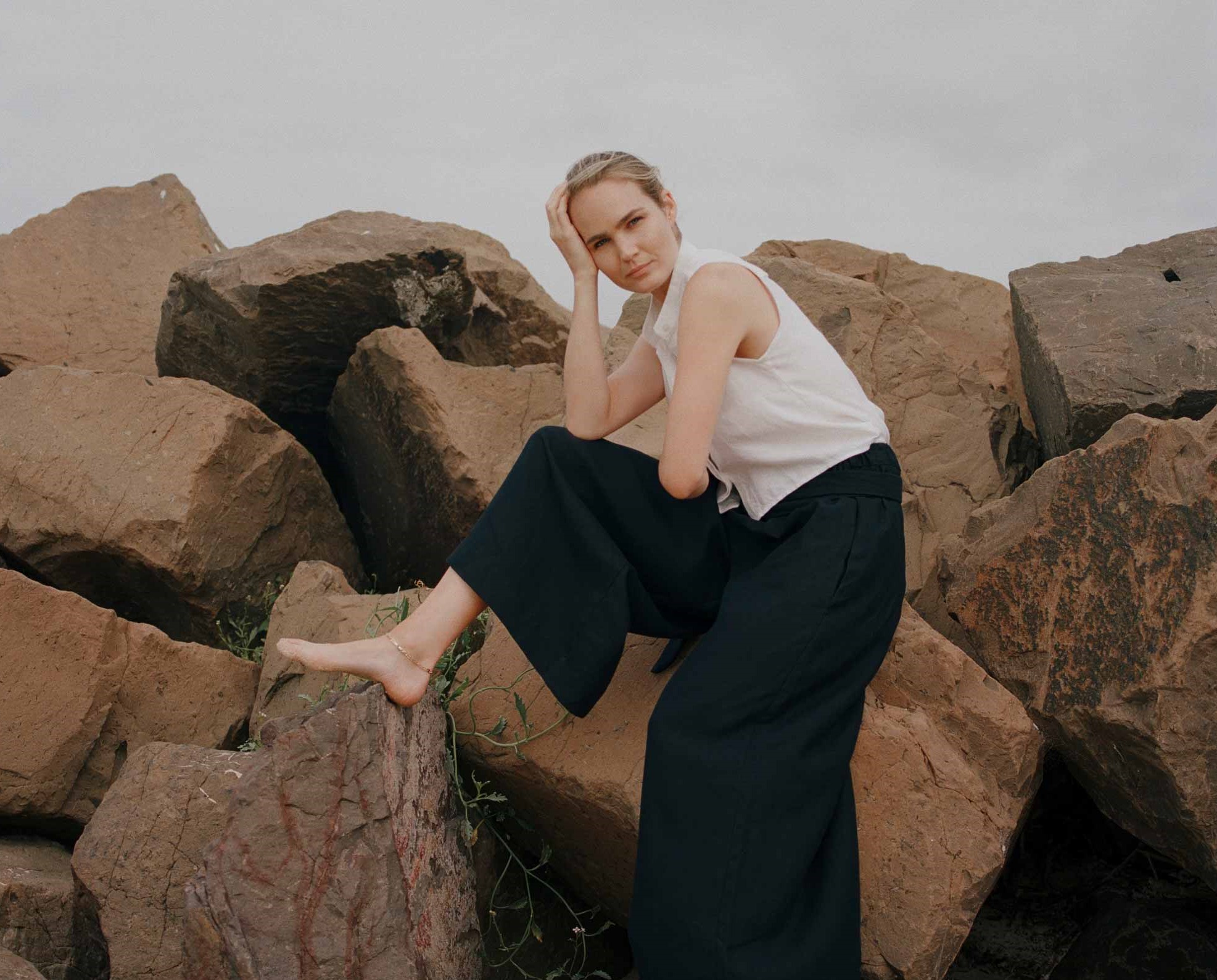The fashion industry is fucked.
We treat garments like disposable skins that can be peeled off at any second, thrown in the trash, and replaced with the next best thing without any repercussions.
We expect new season collections every single week.
We extract resources from our planet in environmentally toxic ways, to create garments that are only worn three times before sitting in landfill for hundreds of years.
We produce 100 billion garments per year globally, and we throw away 50% of all fast fashion within a year of purchase.
Image: Brooke Testoni wearing zero waste and circular fashion label A.BCH

See what I mean by fucked?
Thankfully, the fashion industry and society as a whole are realising our resources are finite and our future on this planet is not guaranteed. We’re coming up with ideas about how to battle this global issue, keep resources in the loop, and discover ways of establishing a fashion industry that doesn’t cost the planet.
There’s a new concept in town that could just be our knight in shining armour: Circular Fashion.
Circular fashion was first formally coined in 2014 by Anna Brismar, owner and founder of Swedish sustainability consultancy, Green Strategy. I could try to define Circular Fashion, but Anna describes it best:
“Circular fashion’ can be defined as clothes, shoes or accessories that are designed, sourced, produced and provided with the intention to be used and circulate responsibly and effectively in society for as long as possible in their most valuable form, and hereafter return safely to the biosphere when no longer of human use.” – Dr. Anna Brismar, founder of Green Strategy.
Circular fashion is renting, borrowing, repairing, swapping, recycling, thoughtfully designing, revamping, upcycling, and recreating. Circular fashion includes the idea that clothes are valuable investments and rejects the idea of treating a garment like a cheap and quick takeaway coffee. The circular fashion concept may sound amazing, but what does it mean for the common consumer?
While we’re waiting for more brands to get on board with circularity, here are some ways you can shop circular.
Renting
Circular fashion often ignores the idea of clothing ownership. In its place, circular fashion welcomes the concept of clothes circulating in a resource pool for all humans to draw from, without one individual claiming ownership on anything. You know what this means: Renting.
Renting clothes seems to be the new black. The amount of rental stores not only popping up but actually growing and succeeding, is phenomenal. Two years ago, I had never heard of a renting store before. Now, I could list at least 5 without even putting my mind to it.
You may be familiar with a magazine subscription, but what about a subscription for your wardrobe? Renting clothes generally works on a subscription-based scheme. Pay a certain amount a month for a capped or unlimited amount of clothes, return them after use, and pick a bundle of newbies. This way, you’re always turning up to the party (or simply to work!) with a fresh look, but you’re not spending a fortune on a new dress every weekend. With the rise in renting popularity, fewer dresses sit forgotten in the back of wardrobes, and the number of clothes being produced can decrease. A win for our pockets, and a win for the planet.
Places to rent fashion in Australia:
Swapping
Casually swapping your clothes with a friend is brilliant, but clothing swaps have recently leveled up. The Global Fashion Exchange runs clothes swapping events worldwide and encourages a circular economy through education too. Meanwhile, independent clothes swaps are organised by smaller groups in hundreds of different countries. So, what’s stopping you from organising a clothes swap?
Gather a group of friends, tell them to bring a few pals along too, and see what treasures you can find in another person’s junk pile.
Re-selling
Buying pre-loved fashion is a great way for shoppers to wear designer labels and beautiful things without huge price tags, and selling preloved fashion is a great way to make back your money!
The preloved fashion economy enables you to resell your loved but no longer used items, and enables you to use money to buy someone else’s preloved fashion instead. The idea of ownership is still in practice, but it’s far more fluid and less possessive. Items in preloved stores are more affordable than retail prices, and clothes continue to circulate in our fashion economy.
Check out our guide on preloved designer fashion stores online.

